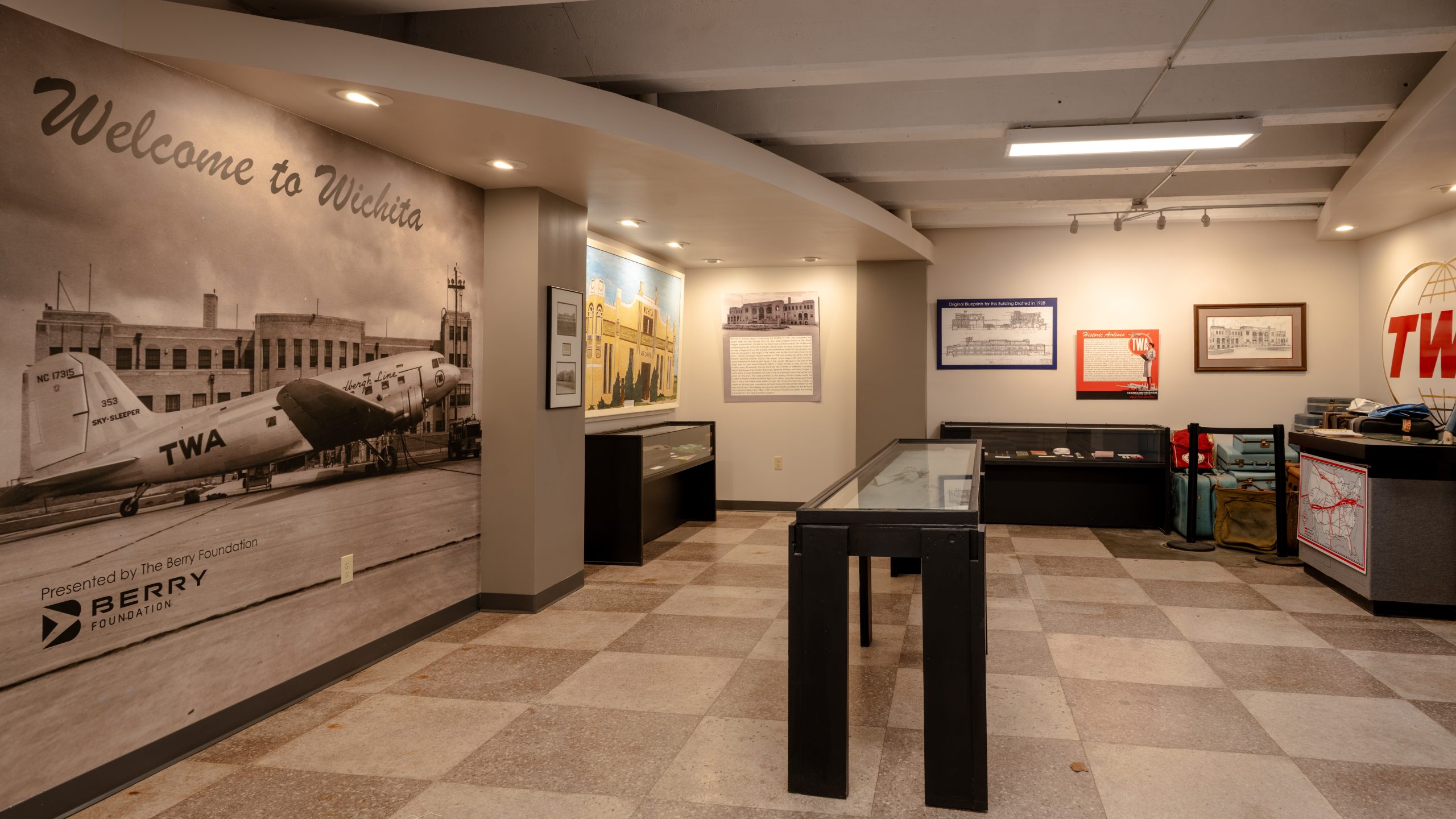
Wichita Municipal Airport Building The city of Wichita began constructing this building in 1930, and completed the project after securing funding from the New Deal program known as the Works Progress Administration. The site for the airport was a natural choice. The tall flat area overlooking the city of Wichita had been used by pilots for years, and even hosted a number of large air shows. The building was an ambitious project for the growing city, and was designed in the height of the artistic and architectural style known as Art Deco. Wichita Municipal Airport opened in 1935, and quickly became a hub for Wichita’s growing aviation industry. The airport, which began with grass runways, quickly became the forth busiest airport in the country. Because it was one of the major stops on most transcontinental flights, a plane landed or took off from this location every 90 seconds. Wichita Municipal saw its share of celebrities including, Dwight Eisenhower, Fred Astaire, Bob Hope, Eleanore Whitney, and Gary Cooper to name a few. Crowds flocked to the state of the art building to watch the planes and picnic on the lawn. The close proximity of the Boeing Wichita facility made the location a natural choice for military flights both during and after the Second World War. In 1954, the United States military bought the airport from the city in order to create an air base, and commercial air travel moved to Midcontinent Airport on the west side of town. This building served as an administrative building for the Air Force until it was shuttered in the 1980s. In 1991, the City of Wichita reacquired the building and leased it to the Kansas Aviation Museum.
Historic Airlines In the early days of commercial airlines, travelling by plane was an expensive luxury. Patrons wore their finest clothes and were treated to complimentary meals and cigarettes. The two main airlines that serviced Wichita Municipal Airport were Braniff Airways and Trans World Airlines, or TWA. The Kansas City based TWA was formed in 1930 by a merger of four smaller airlines, and was well known for its transcontinental ‘Lindbergh Line’ from New York to California. On March 31, 1931 a TWA Fokker F-10 carrying Notre Dame football Knute Rockne crashed outside of Matfield Green, Kansas. The crash killed all eight passengers and spelled an end to wooden aircraft for commercial flights. In 1937, eccentric millionaire Howard Hughes acquired a controlling interest in the company. Hughes would usher in the Douglas DC-3s that would become the standard airliners of the period, and would later work with Lockheed to develop their Constellation for use in the TWA fleet. With the onset of the Jet Age, TWA was slow to embrace the new technology, and lost its once dominant status. After two bankruptcies in the 1990s, TWA was eventually acquired by American Airlines in 2001. In an age of nonstop coast to coast flights, the Lindbergh Line may seem quaint, but this TWA innovation allowed cities like Wichita to get in on commercial air travel.
Small Scale Spirit of St. Louis Mural This cast was used as a mock up for the mural that hangs on the façade of this building. The mural is made of a material called ‘carthalite.’ The material is cast stone like cement that uses ground ceramic for color. Carthalite accents can be found on many of Wichita’s historic buildings. The mural on this building used green glass from Wichita’s Mentholatum factory.
*Click for Full Resolution*
